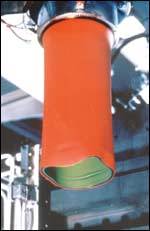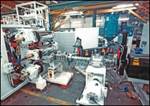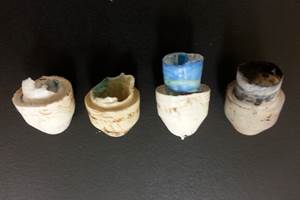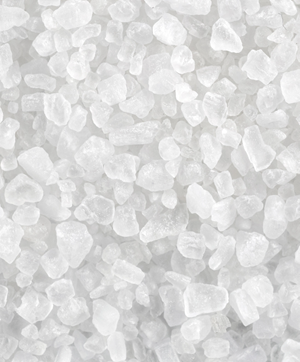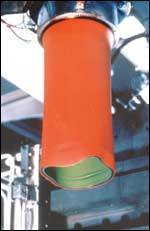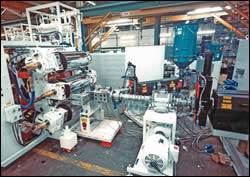Not Your Father’s Purging Agent
Purging Tips: Part 2
There are two important messages for today’s processors with regard to purging. First, as we near the peak of the “rapid improvement” stage of purging technology, the products now available are not the same old purging compounds of the past. Second, the “low-hanging fruit” has been picked—future technical improvements will likely be incremental and future improvements in productivity will require a shift in focus, toward transition planning and process optimization.
The technology of purging has developed along an “S-curve” of capability, as is the case with every other technology over time. The last 30 years have encompassed purging’s “rapid improvement stage.” In that time span, purging went from being a necessary evil for processors dealing with dark-to-light color changes or transitions between resins that took several hours, as well as Monday startups for those who couldn’t run 24/7, which meant “morning sickness” with black specks persisting as long as half a shift.
Then during the 1980’s, a few suppliers began to provide capable purging products that could yield handsome returns in the form of reduced downtime and enhanced productivity, with transition times achieved on the order of about 1 hr. A steady improvement in purging performance soon followed. Today, blow molding and extrusion processors are benefitting from increasingly user-friendly purging materials and relatively rapid transitions, while injection molders are able to accomplish many color or material changes in mere minutes.
TIMES HAVE CHANGED
There are two important messages for today’s processors with regard to purging. First, as we near the peak of the “rapid improvement” stage of purging technology, note that the products now available are not the same old purging compounds of the past. Second, the “low-hanging fruit” has been picked—future technical improvements will likely be incremental and future improvements in productivity will require a shift in focus, toward transition planning and process optimization.
Just 10 years ago, it was widely held that chemical purging compounds would offer excellent performance, but they involved complicated procedures, manipulation of process temperatures, and extended heat-soak periods. In contrast, mechanical purging compounds were easy to use and offered a quick transition, but might not be effective in challenging situations—including tasks like dark-to-light transitions in hot-runner tools, and effective purging in extrusion or blow molding systems.
The distinction between these product classes has become less sharp. Today, there are products derived from chemical purging technology that provide good performance without excessive soaking times or temperature manipulations. Similarly, there are improved mechanical purging products that are more effective in dealing with complex equipment and engineering-grade materials—situations that challenged these products in the past.
There will always be challenging purging tasks that require aggressive measures—such as combinations of difficult materials, complex hot manifolds, large extrusion blow molding systems, and multi-layer film lines; but with today’s purging products, many color or material transitions can be accomplished quickly using simple procedures. And, for simple molding machines in everyday purging situations, transitions of 10 min or less are not uncommon.
If your views on purging compounds are based on experience from a few years ago, revisit the subject. Review your purging needs with reputable suppliers and let them suggest which of their current products are best suited for you. You may find that the latest advances in purging technology will deliver significant advantages.
Here’s a recent example: One of Novachem’s long-standing customers used one of our standard chemical purging compounds for transitions in a sheet extrusion system with fully satisfactory results. We suggested they evaluate a new material that we felt would offer similar results without the need to either increase process heats or apply an extended heat soak. They tried it and were able to reduce the total time for the transition by 45 min and to reduce the cost of purging material used. Needless to say, they made the switch.
WHAT’S NEXT?
The industry’s progress has addressed the “easy” problems; purging performance is approaching what some would regard as “irreducible” limits. For example, in parts of the injection molding sector, it is now fairly common to find dark-to-light color changes taking about 10 min from good part to good part. In large or complex systems, it is no longer unusual for transitions to take less than 1 hr. When this level of performance is achieved, it is usually a case of modern equipment design working in concert with modern purging compounds. While today’s highly effective purging products have helped a great deal, the purging problem is not about to go away.
Now the search for better solutions will become embedded in total process design. Further gains in productivity related to color and material transitions will come from approaches that make process and transition planning an integral part of production planning. Production managers will need to select the purging material best suited to the need, and use it at the best time with the best procedures. This might affect job sequencing, shutdown planning, process design, and operator training. Your purging compound supplier can provide important input on the ways purging considerations influence these issues, and this ability can be as important as the purging product itself.
An open line of communication between the purging material supplier and the production planner is essential and, at the same time, hard to maintain. Creative approaches are needed. For example, Novachem recently was able to provide actionable suggestions to the production management of a large extrusion facility faced with a tough purging problem. We suggested changes to their purging procedures and frequency that alleviated the problem. But the essential first step was to agree on ways to keep in touch. The key contact was a process engineer who was extremely busy, so our technical specialist offered ways to exchange information that were efficient and respectful of his time.
Related Content
Asahi Kasei Plastics North America Welcomes New President and COO
With APNA’s president and COO Todd Glogovsky’s retirement April 1, his successor will be v.p. of commercial sales Phani Nagaraj
Read MoreHow to Start a Hot-Runner Mold That Has No Tip Insulators
Here's a method to assist with efficient dark-to-light color changes on hot-runner systems that are hot-tipped.
Read MoreBest Practices for Purging PHA and PHA/PLA Blends
Because bioplastics are processed at lower temperatures, purging between jobs requires a different process and purging agents than those applied for traditional resins.
Read MoreCast Acrylic Purging Compound
Mechanical purging compound comes in granulate form, enhancing handling, storage and grittiness for cleaning.
Read MoreRead Next
Chemical Purging: When and How to Do It Right
Extrusion blow molders are sometimes skeptical of chemical purging compounds (CPCs), and they have a point.
Read MoreFour Ways to Fight Sky-High Resin Prices
There are lots of ways to economize on resin costs, but here are four that you may have overlooked: negotiating smarter resin contracts, buying “futures,” using recycled resins, and more efficient purging aids. The main idea is to give yourself more choices, no matter what direction resin prices go.
Read MoreStop Black Specks!
Black specks in film or sheet–especially in light-colored or clear plastics–lead to scrap, unscheduled shutdowns, and dissatisfied customers.
Read More
